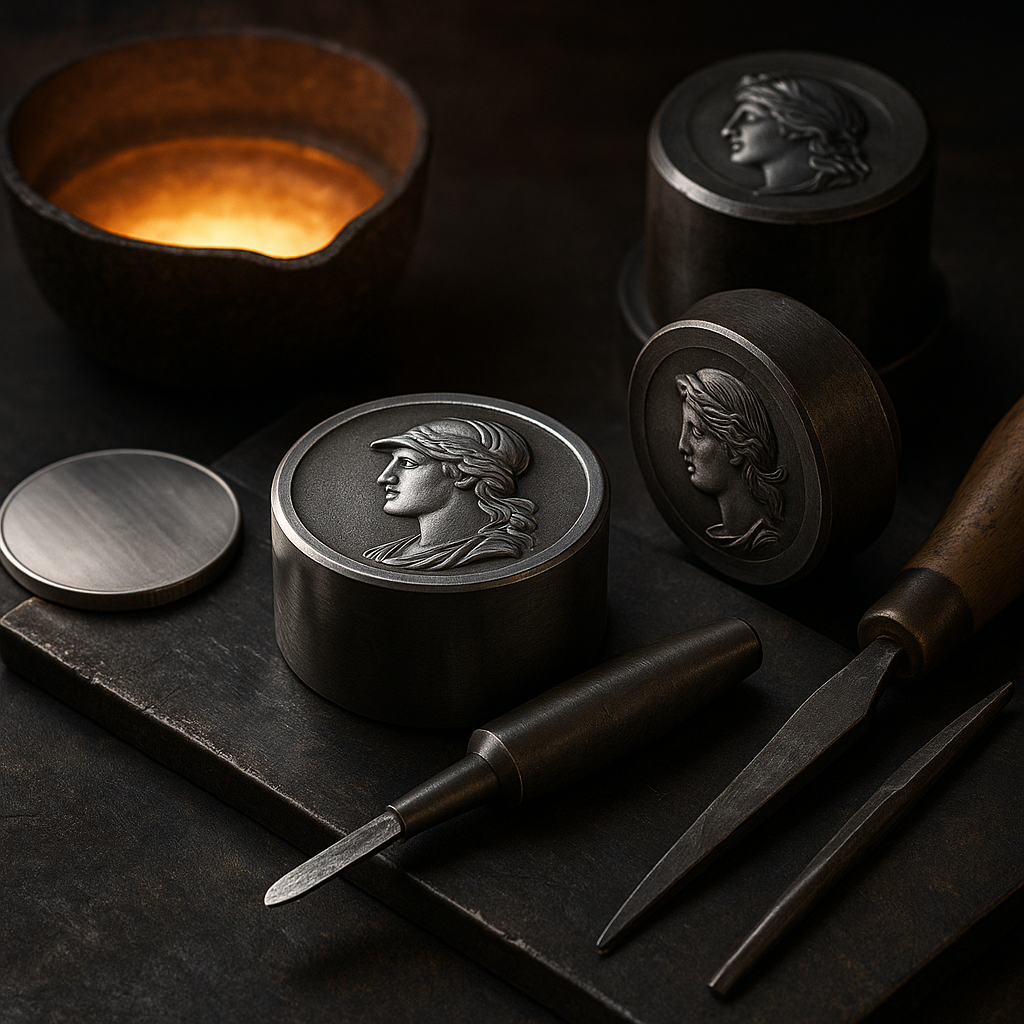How Coins Are Made: From Raw Metal to Masterpiece
– by Opulence, The Collection by LKL
⸻
When you hold a luxury coin in your hand — its surface gleaming, its details razor-sharp — it may seem like magic.
But behind every masterpiece is a precise, multi-stage journey that transforms raw metal into a collector's treasure.
At Opulence, we try to only work with mints and artisans that treat this process as both science and art. From silver blanks to antique finishes, here's how it all comes to life.
⸻
1. The Raw Beginning: Melting & Blanking
Everything starts with pure silver — usually .999 or higher in fineness. The metal is melted down, refined, and then rolled into sheets of uniform thickness.
From there, blank discs (called planchets) are punched out. These raw, undecorated rounds are the future canvases for high-end coin art.
At this stage, they're cleaned, polished, and weighed to perfection.
⸻
2. The Soul of the Coin: Engraving the Dies
This is where design comes in.
Master engravers carve a negative image of the coin's artwork onto steel dies — one for the obverse (front), one for the reverse (back). This is where your gorilla, grizzly, goddess, or warrior is born.
Some designs are hand-sculpted in 3D, scanned, and digitally refined to ensure microscopic precision. Others involve traditional hand tools — often taking weeks to perfect.
⸻
3. Striking: Where Pressure Meets Precision
The polished planchet is placed between the engraved dies and struck under intense pressure — often several hundred tons. For premium coins, this may happen multiple times to enhance clarity.
This step brings the coin to life, revealing every ridge, furrow, and muscle in breathtaking detail.
At Opulence, many of our coins are:
• High Relief: The design rises significantly above the surface, giving a dramatic 3D effect.
• Ultra High Relief: Even more depth — almost sculpture-like.
• Smartminted™: A modern technique allowing extreme detail on both sides, even on small coins.
⸻
4. The Finish: Gilding, Antiquing, and Color Magic
Once struck, many coins receive premium finishes that turn them into true works of art:
• Antique Finish: A darkened patina that highlights shadows and textures. Gives a timeless, museum-like look.
• Selective Gilding: Real gold (usually 24K) is applied to specific areas of the coin — often to elevate symbols, characters, or lettering.
• Color Application: Vivid, durable inks or enamel bring animals, art, and scenes to life — used on coins like Día de los Muertos or Deadliest Encounters.
• Proof Finish: A mirror-like surface with frosted designs — crisp, elegant, and highly collectible.
⸻
5. Final Touch: Numbering, Packaging, and Certification
Each finished coin is inspected, numbered (if part of a limited run), and placed in protective capsules or display boxes.
A Certificate of Authenticity (COA) confirms its mintage, specs, and legitimacy.
From here, it's ready to be shipped to collectors — or displayed in our vault.
⸻
Why It Matters
Knowing how a coin is made helps you appreciate the artistry — and spot the difference between mass-produced rounds and true collectibles.
Each piece in our collection reflects technique, intention, and legacy.

Share:
From Gifting to Legacy
Luxury Pens Throughout History